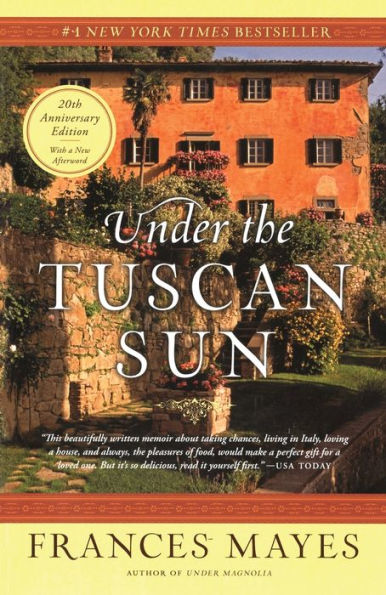20th Anniversary Edition with a New Afterword
Twenty years ago, Frances Mayes—widely published poet, gourmet cook, and travel writer—introduced readers to a wondrous new world when she bought and restored an abandoned villa called Bramasole in the spectacular Tuscan countryside. Under the Tuscan inspired generations to embark on their own journeys—whether that be flying to a foreign country in search of themselves, savoring one of the book's dozens of delicious seasonal recipes, or simply being transported by Mayes's signature evocative, sensory language. Now, with a new afterword from the Bard of Tuscany herself, the 20th anniversary edition of Under the Tuscan Sun brings us up-to-date with the book's most beloved characters.
20th Anniversary Edition with a New Afterword
Twenty years ago, Frances Mayes—widely published poet, gourmet cook, and travel writer—introduced readers to a wondrous new world when she bought and restored an abandoned villa called Bramasole in the spectacular Tuscan countryside. Under the Tuscan inspired generations to embark on their own journeys—whether that be flying to a foreign country in search of themselves, savoring one of the book's dozens of delicious seasonal recipes, or simply being transported by Mayes's signature evocative, sensory language. Now, with a new afterword from the Bard of Tuscany herself, the 20th anniversary edition of Under the Tuscan Sun brings us up-to-date with the book's most beloved characters.

Under the Tuscan Sun: At Home In Italy
320
Under the Tuscan Sun: At Home In Italy
320Paperback(Reprint)

Product Details
| ISBN-13: | 9780767900386 |
|---|---|
| Publisher: | Crown Publishing Group |
| Publication date: | 09/02/1997 |
| Edition description: | Reprint |
| Pages: | 320 |
| Sales rank: | 17,262 |
| Product dimensions: | 7.96(w) x 10.86(h) x 0.82(d) |
About the Author

Customer Reviews
Explore More Items
Hercule Poirot finds himself embroiled in a world of international intrigue and espionage as he investigates a series of mysteries involving the shadowy organization known as the Big Four. These
Mr. Shaitana is famous
"My very first grown-up book, I distinctly remember going to the library and my mom helping me pick out an Agatha Christie book. I tore through The Mysterious Affair at Styles. GILLIAN FLYNN, author
His previous excursion along the Appalachian Trail resulted in the sublime
What is
An inspiring and hilarious account of one man’s rediscovery of
In the early seventies, Bill Bryson backpacked across Europe--in search of enlightenment, beer, and women. He was accompanied by an unforgettable sidekick named Stephen Katz (who will be gloriously
In A Walk in the Woods,
An intimate journey across America, as told by one of its most beloved writers
To hear the speech of the real America, to smell the grass and the trees, to see the colors and the
A Penguin Classic
In his journal, Nobel Prize winner John Steinbeck called East of
Written at a time of profound anxiety caused by the illness of his mother, Nobel Prize winner John Steinbeck draws on his memories of childhood in these stories about a boy who embodies both the
